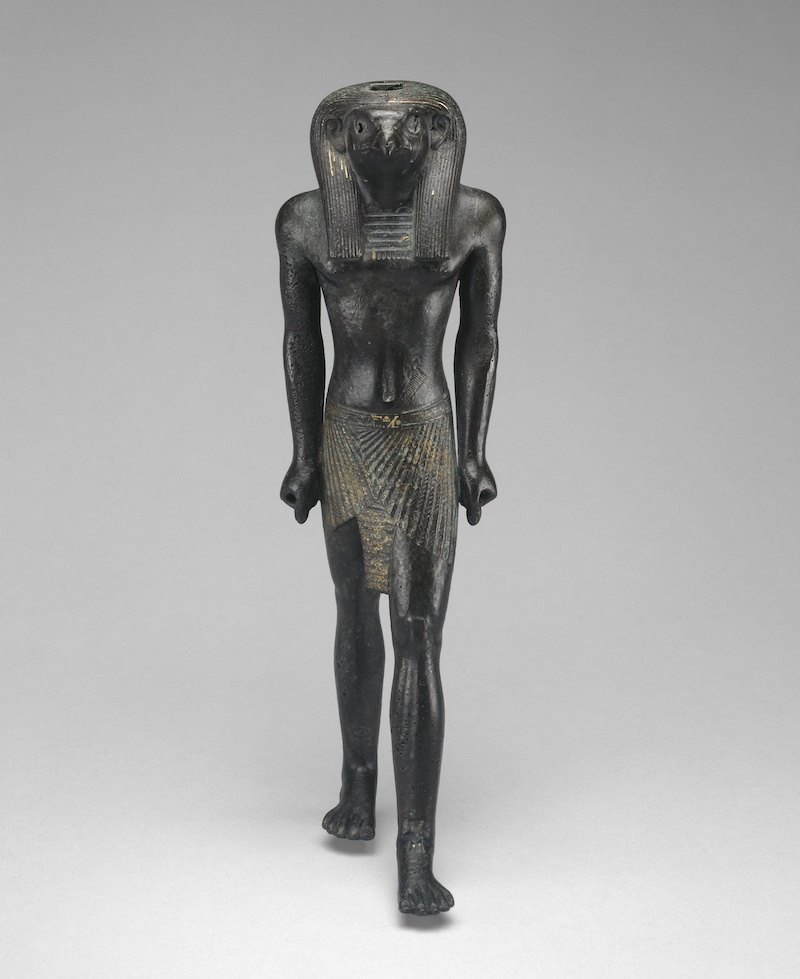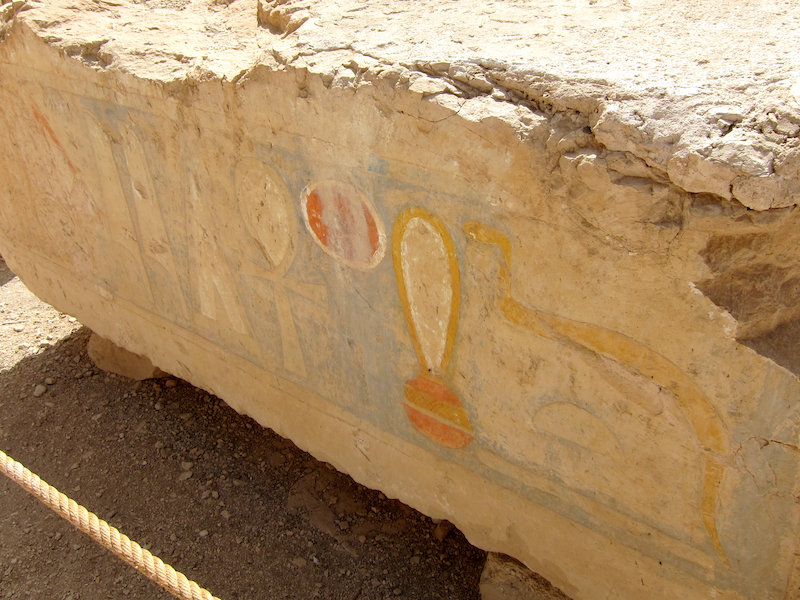Re: Sun King of the Egyptian Gods
The god who personified the sun was one of the most important and widely-venerated of Egypt’s deities. Re was considered a demiurge, or creator god, who brought himself and the rest of the pantheon into being at the beginning of time. He was also central to the ideology of kingship. In myth, he appears as the king of the gods, and from at least the reign of Djedefre in the fourth dynasty (ca. 2528-2520 BCE), he was considered the divine father of each successive pharaoh. Despite the sun-god’s importance and visibility in the religious culture of ancient Egypt, however, many elements about him remain surprising, even mysterious. Re was a complex and multifaceted being whose very identity puzzles and intrigues us to this day.
When we speak of the Egyptian sun-god in general, we call him “Re,” which is also the ordinary Egyptian word for “sun” and “day.” Even the ancient Egyptians often referred to him in this way. As Re, he appeared in countless royal names and epithets, and it was as Re that he traversed the underworld at night to do battle with the forces of chaos. But the sun-god could take many forms. At dawn, he was Khepri, represented as a dung beetle. At sunset, he was Atum, the primordial creator, often shown as a human being dressed in kingly regalia. Already in the Old Kingdom, we know from the Pyramid Texts that these three gods were considered aspects of one being. More than 600 years later, a text called the “Litany of Re” first appears in the tomb of Thutmosis III (ca. 1479-1425 BCE), attributing some 75 different identities to the sun-god.
In addition to possessing these many individual forms, Re could also be part of “composite” or “syncretistic” deities – gods in which aspects of divine beings were combined with their own separate identities. Although syncretism is characteristic of Egyptian religion as a whole, Re seems to have possessed this power in a special way. He is the first god for whom this kind of “shape-shifting” is attested, and he was able to take multiple forms and meld with other members of the pantheon more than any other god. For instance, two or more solar deities could be united in forms such as Re-Atum or Re-Khepri. Beginning in the Middle Kingdom (ca. 2030–1640 BCE) Re also commonly joined with other deities who were not fundamentally associated with the sun, including Khnum, Min, Montu, Sobek and, perhaps most notably, the Theban dynastic god Amun.
Why might Re have been so complex and multifaceted? Scholar Jan Assmann has influentially described him as being uniquely suited to the role of “universal” deity, omnipresent through the life-giving rays of the sun and all-powerful as the creator of the world. Other gods, although they could retain their own names, forms and cults, could easily be conceived of as existing through, or as part of, Re. Around the mid-point of the New Kingdom, the “heretic” pharaoh Akhenaten (ca. 1353-1336 BCE) took this universalizing concept of the sun-god to a radical extreme when he restricted Egypt to the worship of a single form of the sun-god – the disk-shaped Aten. This “monotheistic” turn in Egyptian religion has long been compared with the emergence of Judeo-Christian monotheism. Because Akhenaten’s solar “revolution,” and the religious ideas that made it possible, are so fascinating from a theological standpoint, they have been most extensively studied through the lens of thought and belief.
But the cult of Re displayed another side. The religious beliefs associated with the Egyptian gods were not just ideas but found expression through cultic practices. Gods required homes (temples and shrines), nourishment (offerings) and entertainment (ritual performance of music and dance, for instance); these services provided income and social identity for countless Egyptians. In addition to the economic impact of temples, each town and nome (administrative district) also had its own patron deity. A person’s “city god” was considered a special protector, and the worship of this god was an aspect of an Egyptian’s relationship with a home community. Re, particularly in his forms of Atum and Re-Horakhty, was himself a “city god” whose cult center was at Iunu (or Heliopolis, the “city of the sun”) near modern Cairo.
Changes in theology corresponded with changes in how people earned their living and how they understood themselves as members of society. What, then, does it mean that despite the potential for Re to serve as a “universal” god, he went by many names in every period of Egyptian history – even under Akhenaten? In the “heretic” king’s early years, the Aten was addressed as Re-Horakhty (a version of Re that identified him with a solar form of Horus, the falcon-god of kingship). Even as the reign progressed, and the worship of other gods grew more restricted, the Aten never lost its identity as an iteration of Re, who continued to be named alongside it. In my research, which focuses on the period after Akhenaten’s “revolution,” I study the role that the sun-god may have played in the political and social lives of the ancient Egyptians.
When and where did elite Egyptians choose to highlight one or another aspect of Re’s identity? What does it mean that, even though the memory of Akhenaten and his solar religion were anathematized after his death, the worship of the Aten persisted and the visibility of Re-Horakhty seems to have increased? The intimate relationship between kingship and the cult of Re, along with the widespread and long-lived prominence of his cult, make it an ideal window to investigate the social and political aspects of the rich religious traditions of ancient Egypt.
Recommended Readings
The Cult of Ra and Hudson, 2001).
the Crisis of Polytheism (London: Routledge, 2009).
The One and the Many (translated by John Baines, Ithaca, NY: Cornell University Press, 1996).

